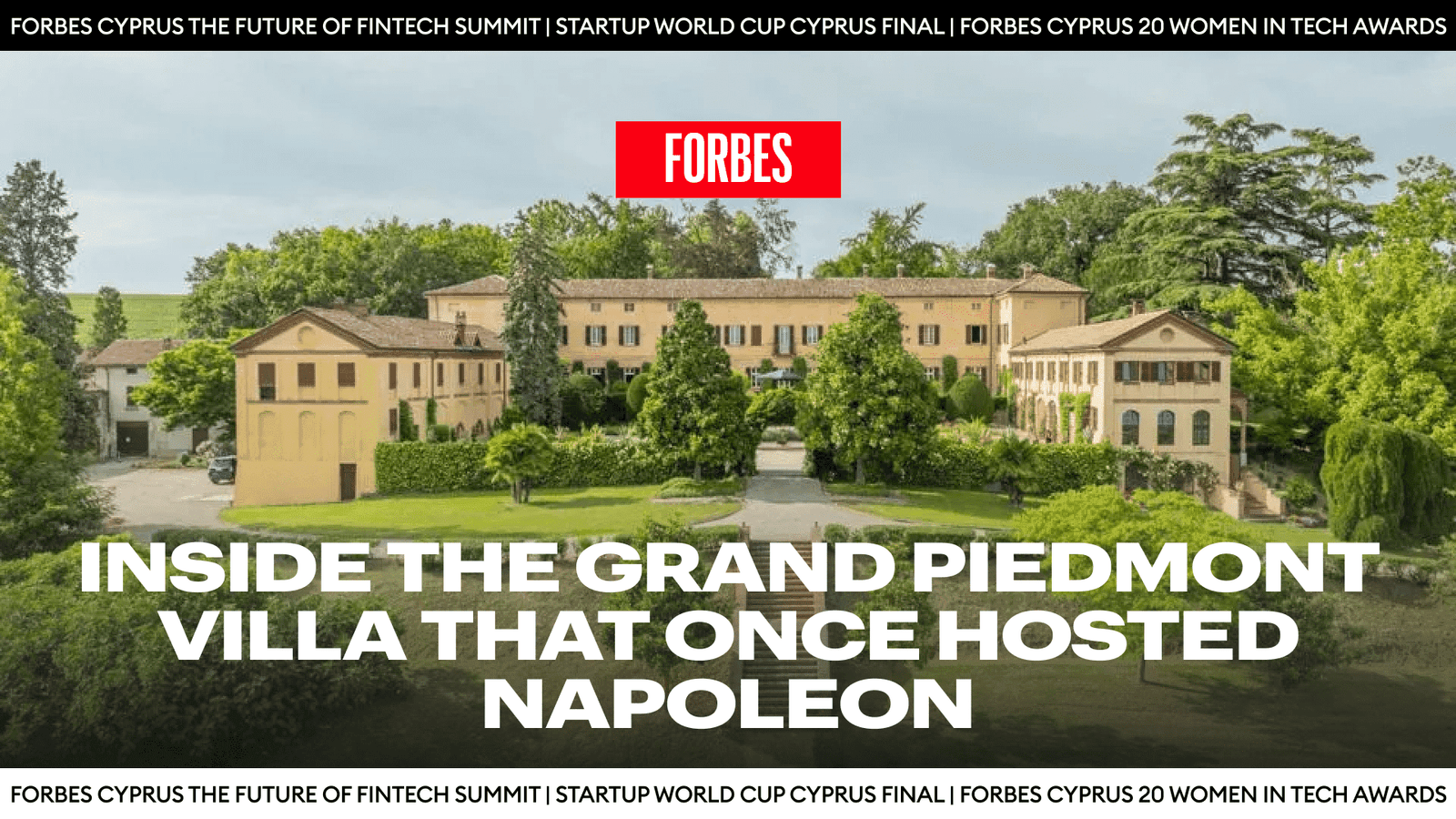Not many downsizers can claim—truthfully, anyway—that Napoleon stayed in their home. But then few in that position are scaling back from a property quite as grand as La Voglina, a 25-hectare hilltop estate in northern Italy’s Piedmont region that overlooks the plains where Napoleon rode to victory in the Battle of Marengo more than two centuries ago.
It was here, in this very villa, in 1800, that the French statesman and his troops stayed and regathered their strength for their victorious battle against the Austrians that ended in nearby Alessandria, half an hour’s drive (rather longer and bumpier on horseback) south of the villa.
Follow THE FUTURE on LinkedIn, Facebook, Instagram, X and Telegram

Grand and grander: the bones of the Italian Baroque property came to life under the deft hand of the architect and scenographer Filippo Juvarra (1678-1736).
Building Heritage | ©Ziba Bandpey
Just 20 years later, in 1820, a family acquired this classic Italian Baroque mansion set among its own mini empire of parkland, formal gardens and vineyards. But with the current owners—descendants of that original family—now into their retirement years and wanting somewhere a little less high-maintenance, they are hoping to find new owners to realize the 3,300-square-meter (35,520 square-foot) property’s potential.
That potential will most likely take the form of “both a home and an income-generating business, such as a boutique hotel, cultural and events location, or a retreat to rent out to HNWIs,” comments Rome-based Chiara Gennarelli, senior advisor at Building Heritage, the brokerage listing the historic property at €4 million (~$US4.476 million). “You could build a pool and a spa and ho use staff in the hamlet’s 12 suites,” she adds.

Building Heritage | ©Ziba Bandpey
There are two further potential income streams to explore, too. The land surrounding the estate, once a rich source of Piedmont’s dry Barbaresco and plummy Barbera wines, could be planted with enough new vines to produce around 100,000 bottles a year. And the fine line in truffles found in the surrounding soil could yield more than simply a decadent accoutrement to family dinners. The oaky summer black variety sells for US$500 per lb through online gourmet retailers, and the even rarer, more subtle, white—or Piedmont—truffles, which are ready to unearth from September to December, can fetch more than 10 times that.

Building Heritage | ©Ziba Bandpey
A popular retreat for wealthy Italians, the hills of Piedmont are located neatly amid the industrial, financial and fashion triangle of Genoa, Turin and Milan. And for lovers of history and art, northern Italy is peppered with properties of illustrious provenance, its rural estates awash with references to the poets, politicians and princes who once found inspiration beneath their frescoed ceilings.
While many of those names may draw a blank with the average overseas house-hunter, Napoleon needs no introduction. “He’s a world-famous name. Everyone knows it instantly,” Gennarelli laughs. “It makes this, one of the most ancient properties in Piedmont, a true trophy asset.” So entrenched is the French figurehead in local history that the road leading to the villa is called Via dei Napoleone.

Building Heritage | ©Ziba Bandpey
The current owners live in one restored wing of the villa, and many of the structure’s original features remain, including Habsburg zig-zag tiles in the entrance halls, three black-and-white marble staircases and a serene private chapel. La Voglina’s next owner is likely to want to do some significant modernization, “so the asking price takes renovation costs into account,” says Gennarelli.

Building Heritage | ©Ziba Bandpey
There are further names to be dropped in this story, likely to pique the interest of potential buyers who want to capitalize on La Voglina’s heritage. Its Sicilian architect, Filippo Juvarra—a successful multi-hyphenate of his day, as a theater-set designer, engraver and goldsmith—found fame in Piedmont when he moved there to become chief court architect for Victor Amadeus II of Savoy, also a man who liked having more than one title, King of Sicily and King of Sardinia among them. Shortly after Juvarra designed La Voglina, he skipped off to Portugal and Spain to build more homes fit for actual kings.

Building Heritage | ©Ziba Bandpey
It’s also prescient that Juvarra, with his gift for goldsmithery, migrated to this patch of Piedmont. Down the road from La Voglina lies Valenza, a tiny town with a weighty reputation as the world’s jewelry capital, thanks to having more goldsmiths (relative to its 19,000-strong population) than anywhere else in Italy. Bulgari, Tiffany, and Cartier are among the global brands with HQs there, contributing to Valenza’s $3 billion-a-year luxury jewelry business.
La Voglina is something of a rare gem in its own right—one that, within a few weeks of going on the market this summer, has drawn the attention of potential buyers from Abu Dhabi, France, Korea, and the U.S. It may not be long until one is in situ, feasting on stories of Napoleon and home-foraged truffles.







